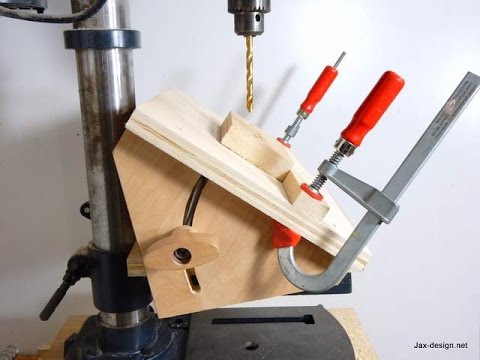Woodworking clamps come in many shapes and sizes and sometimes you never have the right size. Having large clamps is handy so I wanted to build something different, I wanted it to be large, strong and have a long reach.
To build this strong clamp steel and maple will be used and when i'm done I will give it a good test.
The jaws will be mounted on flat bar and the one end with the handle will have a swivel pad for full contact on uneven or sloped surfaces.
Material list
- hot rolled steel , 1 1/4x 3/8" L= 22 inches
- maple 1x6 3 feet.
- threaded rod- 5/8" L= 8 inches
- coupling nut
- set screw 1.5"
- wooden ball 1 1/2" diameter
Lets begin
A piece of hot rolled steel can be purchased from your local metal mart. I got six feet and it cost around $1 a foot. It's alway nice to have some leftover in the shop for future projects.
Using a hacksaw a piece was cut 22 inches long.
The new caliper which I made last week was used to measure the pieces of maple for the clamp jaws. They are cut to a length of 11 1/4 inches.
These calipers are sure getting a lot of use.
Dado cuts are made in only one side of top jaw and bottom jaw. The other side is not cut, this will help keep it stronger.
A test with the bar and it is a good fit. It has a little bit of play and that will be good for the sliding and locking screw as we will see later.
Gluing the blocks
With the bar in I glued the blocks together, if it is a tight fit it may be very difficult to remove the bar later.
It happened to me so what I did is cut a small piece of the bar around 8 inches long and had to use a sledge hammer to pound it out. A few good whacks and it will come out.
One of the ends of the bar will be mushroomed before it can be epoxied to the fixed jaw. This will help give it more support in the fixed jaw.
A sledge hammer and a vise are used to swedge the bar end.
After the glue is dried and the bar is removed a hole is drilled for a coupling nut for the threaded rod.
A chisel was used to square the hole for the nut.
This hole in the sliding jaw is for a set screw to help lock on the bar.
How to build a wooden swivel pad
To start I will drill a hole in a 1 1/2" hardwood ball. This will fit a 5/8" threaded rod. Simply place the ball in the centre of the drill press table and with a screw clamp hold the ball and drill about halfway through the ball.
Next step is to cut some square pieces of plywood and drill a hole in them slightly larger than the ball. This will make a box to contain the wooden ball.
All the layers of plywood are stacked and glued together. The ball with the rod is put inside and the last piece of wood with a smaller hole is glued on making the swivel pad.
Check out how the clamp is sitting, I am sure that will come in handy for some clamping job.
The swivel pad and handle....
The handle was made from a piece of fir. It was drilled using a bit the same size as the threaded rod and glue together with epoxy.
Here is a view of the set screw and the bar. One end of the bar was roughed on the belt sander with 50 grit sandpaper.
A test breaking a piece of 1.5 x 2 inch board
I made this setup to test the clamp, I wanted to see how it would snap a good size piece of wood. After I clamped it together I was turning the handle and it took quite a bit of strength to break it. The clamp passed the test and I now have a good idea on its strength.

Conclusion
It is always fun to make your own tools, and sometimes they can turn out better than store bought tools.
After testing this clamp I know it will come useful in the shop. It has a long reach and the jaws open to over one foot. oh and the swivel pad.
What do you think of the size or the strength? Have you made any clamps? Let me know or show me a photo.
You may also like:
Angle drilling jig Table clamp Wood clamp
























Very nice project. And I am sure it will be very useful in the shop, as you said.
ReplyDeleteThanks Ade, I'm glad you enjoyed this project.
DeleteMake a fearless fashion move with the sp5der blue hoodie where bold color meets street-ready energy. Designed for comfort and built to stand out, it's the ultimate piece for trendsetters who don’t blend in. Own the street, own your vibe with style that speaks louder than words.
ReplyDelete